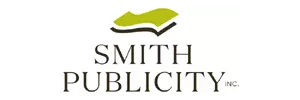How to Write a Captivating Book Proposal
by Ally Machate
Many authors believe they must write a book before they can start trying to pitch their work to agents and publishers, but if you’re writing a prescriptive nonfiction (i.e. problem-solving) book, you can save yourself a lot of time and energy by giving these industry pros what they really want: A captivating book proposal.
A great book proposal is essentially a marketing document, an extended pitch for your book that helps agents and publishers see the vast potential for sales that your project offers everyone involved. The process of creating it has hidden benefits, namely the opportunity to think through your book from a marketing and sales perspective.
And the best part is that you don’t need to write the book first! Most book proposals include no more than three sample chapters. Publishers generally prefer that nonfiction authors submit proposals for unwritten books so they can have more input and make the book as marketable as possible.
So how do you write a captivating book proposal? Read on to find out!
Tip 1 – Build a Case
The most important thing your book proposal does is to make a case for why your book should exist in the first place: This means showing that there is a need in the market. And one of the best ways to start with that is examining your competitive titles and your comparative titles.
Competitive titles are other books that directly compete with yours, meaning that they are on the same topic and for the same audience. Imagine your ideal reader (we’ll come back to who that is in a moment) can only buy one book on your topic: What other books might she be thinking of buying instead of yours?
Comparative titles are a bit different in that these may not be on precisely the same topic or for the same audience, but they’re close enough that their success can indicate the potential success of your own book. Your imaginary ideal reader might choose some of these books in addition to yours.
Not only will you need to include information on 3-5 of these other books in your proposal, what you discover during this initial research expedition can save you a lot of work, disappointment, and aggravation if you discover there’s no viable market for the book you intended to write. For example, maybe someone with better credentials or a much bigger platform has just published a book exactly like the one you propose. This doesn’t mean you shouldn’t bother writing your book, but you will need to think hard about how you will distinguish it from what’s already available—a new angle, perhaps, or different audience. In some ways, publishing a book is like entering a cocktail party—what will your book contribute to the conversation that’s already in full swing?
If your book targets so small a niche that there honestly are no competing or comparative titles, you are probably addressing too small an audience to interest most publishers. With the exception of truly cutting-edge topics (like a groundbreaking new scientific development that changes how we think about heart disease, for example), a lack of books on your topic likely indicates a lack of large-scale need. If that’s your situation, consider self-publishing instead.
Tip 2 – Know Your Audience
While you’re checking out the other books like yours, you should also be thinking about who, exactly, is reading those books. Part of building your case to publishers is showing who your book’s buyers (aka readers) are going to be, proving that there are real people who need what you have to offer. After all, someone is buying those comp titles, right? Who are they, and why will they buy your book?
One way to figure that out is to be super clear about what your reader’s pain points and problems are. In other words, why is this person seeking out a book and what are they hoping to get from that book? When you know that, you can more easily spot the gaps in the market. One sure way to catch an agent or publisher’s attention is to reveal a specific need or niche that is not currently being satisfied by your competition. And, of course, how yours will fill that need. You can also talk about the size of that audience and all your genius ideas on how to reach them with your marketing plan, which will make your prospective publisher see dollar signs.
You likely have some idea of who your target audience is, but do you know the finer details of your “reader avatar?” It sounds counterintuitive, but books are most successful when they are targeted very narrowly, meaning that there is a clearly identifiable “ideal reader.” As you research and think through who this ideal reader is, you’ll start to build a “reader avatar,” which is basically a profile of this perfect customer, from their age to their family situation to their hobbies. You can get really into the weeds on this one—just Google “reader avatar” or “customer avatar” and you’ll find loads of resources guiding you through the process. (Here’s a great one.)
Tip 3 – Be Specific
Now that you’ve framed your case for why a publisher should invest in your book, and you’ve done critical research on your target audience, it’s time to start getting all that good stuff into your proposal. Start with the numbers: Whenever possible, use statistics and numbers to strengthen your case. For example, it’s good to know that your book about anxiety targets people who suffer from anxiety. It’s great to know that anxiety disorders affect about 18% of the U.S. population, every year. It’s super great to say that more than 31% of American adults reported struggling with anxiety during the COVID-19 pandemic, almost double the usual.
See how much more convincing your case becomes when you’re specific?
Beyond the numbers, there are other ways you’ll want to be specific. For example, do you have ties to any 
Think your topic is a perfect fit for podcast or blogger interviews with you as a guest expert? Awesome! But you don’t want to simply say “Part of my marketing plan is to approach podcasters and bloggers.” That’s weak sauce. To make a strong case, you’ll want to tell publishers which podcasts and blogs you will approach. And again, you’ll want to state how many people are on their subscriber base/mailing list, and if you have any “ins.”
Be Prepared
As Alexander Graham Bell once said, preparation is the key to success. In writing your book proposal, you are thinking through the answers to all the fundamental questions a publisher will have. They want to know what your book is about, yes, but also (and in some ways, more importantly): Who is it for? Why is it necessary? Why is it needed now? How will you promote it? And, of course, why are you the perfect person to write it?
Ultimately, a captivating book proposal will prove to agents and publishers that there are loads of people out there who need your book and want it now; it’ll also show them that you know precisely who these people are and how to reach them. Do that and you’ll have successfully made a case for why your book deserves to be published and will make everyone involved a lot of money—because at the end of the day, books are picked up by publishers to boost their bottom line, not just add interesting reading material to an overstuffed marketplace.
To best apply these tips, though, you’ll need to know what a typical book proposal looks like and is expected to contain. Click here to grab a free resource I’ve prepared just for you on what goes into a prescriptive nonfiction book proposal.
A bestselling author and expert publishing consultant, Ally E. Machate has served both small and “Big Five” publishers, including Simon & Schuster, where she acquired and edited books for the Touchstone and Fireside imprints. Her client list includes authors publishing with such companies as Simon & Schuster, Penguin Random House, Rodale Inc., Chronicle Books, Kaplan Publishing, Sourcebooks, Sunrise River Press, and Hay House, as well as independently published bestsellers. Ally leads a diversified team of professionals who specialize in helping serious authors fulfill their dreams of publishing success, which includes teaching them how to effectively and efficiently write, publish, and sell more books. Get free gifts and learn more at www.thewritersally.com and www.allymachate.com.


